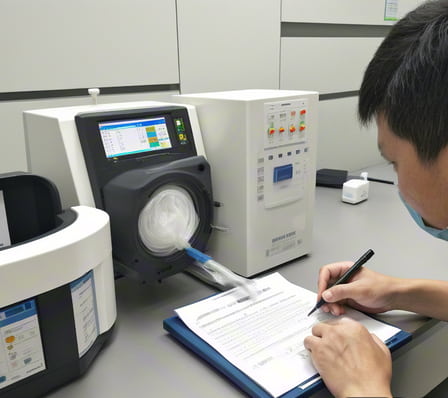


The purpose of adhesive testing is to ensure that their performance, quality and safety meet the requirements and standards for a particular application. The following is a detailed description of these testing indicators and methods:
I. Main testing indicators
Appearance: Detect the presence or absence of impurities, foreign matter, particles, bubbles, odor and uniformity of the adhesive appearance characteristics.
Viscosity: characterize the resistance factor related to the nature of the liquid, commonly used pressure flow viscometer and rotational viscometer method to determine.
Thixotropy (anti-sagging): refers to the glue in a certain shear rate, its shear stress with the extension of time and reduce the characteristics. Good thixotropy of the glue in the use of moderate viscosity, not easy to flow.
Surface drying time: moisture curing adhesive (such as silicone, polyurethane adhesive, PUR hot melt adhesive) exposed to atmospheric environment curing time, the surface viscosity disappears time.
Hardness: Measured using a Shore hardness tester, categorized as Type A, Type C, and Type D. Select the appropriate hardness tester for the test according to the hardness range of the material.
Adhesion: Evaluate the adhesion performance of the adhesive to the surface of different materials.
Shear strength: Measure the strength of adhesive under shear force.
Peel Strength: Evaluates the adhesive's ability to withstand the action of peel force.
Temperature resistance: Tests the stability and performance changes of adhesives under different temperature conditions.
Chemical resistance: including chemical resistance, solvent resistance, water resistance, ablative resistance, monomer content, corrosiveness, free formaldehyde content, heavy metal content, and non-volatile content.
Electrical properties: such as surface resistance, voltage, volume resistivity, dielectric loss, electrostatic properties, dielectric strength and so on.
Physical and chemical indicators: such as air permeability, moisture permeability, density, Menni viscosity, creep, stress relaxation, adhesive strength, surface roughness, swelling, refractive index and light transmission rate.
Mechanical properties: such as hardness, tensile properties, tearing properties, impact properties, friction properties, fatigue resistance, compression properties, bending properties.
Reliability performance: such as oil and liquid resistance, salt spray test, collision test, package drop, compressive strength, dustproof, waterproof, and so on.

Second, the main testing methods
Knocking method: use a small hammer to knock on the bonding surface, from the sound to identify the bonding quality. Clear sound means no defects, low sound may have defects or bubbles.
Visual inspection: Observe the joints of the bonded parts with your eyes to see if there are cracks, fissures and lack of glue. Pressurization method: for sealing pressurized bonding parts, according to the working medium and working pressure pressure sealing test, no leakage is qualified.
Acoustic resistance method: through the anti-acoustic resistance detector to determine the changes in the mechanical resistance of the bonded joints, so as to assess the quality of bonding.
Ultrasonic method: using ultrasonic waves to detect defects in the bonded joints, such as bubbles, debonding, etc.
Universal Material Testing Machine (UMTM): used for tensile, compression, bending and shear tests to assess the mechanical properties of adhesives.
Differential Scanning Calorimeter (DSC): to evaluate the thermal properties of adhesives, such as glass transition temperature and melting point.
Dynamic Mechanical Analyzer (DMA): Measure the mechanical properties of adhesives at different temperatures and frequencies.
Fourier Transform Infrared Spectroscopy (FTIR): analyzes the molecular structure and chemical composition of adhesives.
Gas Chromatography-Mass Spectrometer (GC-MS): to analyze the volatile components and additives in adhesives.
The selection of testing indicators and methods should be based on specific application needs and standards to ensure that the quality, safety and functionality of the adhesive meets the relevant requirements.
Email to this supplier